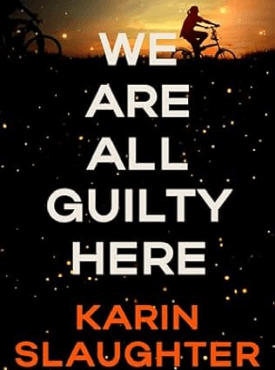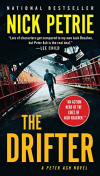John Dos Passos Books In Order
Book links take you to Amazon. As an Amazon Associate I earn money from qualifying purchases.Publication Order of District of Columbia Books
| Adventures of a Young Man | (1939) | Description / Buy at Amazon |
| Number One | (1943) | Description / Buy at Amazon |
| The Grand Design | (1949) | Description / Buy at Amazon |
Publication Order of The U.S.A. Trilogy Books
| The 42nd Parallel | (1930) | Description / Buy at Amazon |
| 1919 | (1932) | Description / Buy at Amazon |
| The Big Money | (1936) | Description / Buy at Amazon |
Publication Order of Standalone Novels
| One Man's Initiation: 1917 | (1920) | Description / Buy at Amazon |
| Three Soldiers | (1921) | Description / Buy at Amazon |
| Streets of Night | (1923) | Description / Buy at Amazon |
| Manhattan Transfer | (1925) | Description / Buy at Amazon |
| In All Countries. | (1934) | Description / Buy at Amazon |
| First Encounter | (1945) | Description / Buy at Amazon |
| Chosen Country | (1952) | Description / Buy at Amazon |
| Most Likely To Succeed | (1954) | Description / Buy at Amazon |
| The Great Days | (1958) | Description / Buy at Amazon |
| Midcentury | (1961) | Description / Buy at Amazon |
| Century's Ebb | (1970) | Description / Buy at Amazon |
Publication Order of Plays
| The Garbage Man | (1926) | Description / Buy at Amazon |
| Airways, Inc. | (1928) | Description / Buy at Amazon |
Publication Order of Non-Fiction Books
| Rosinante To The Road Again | (1922) | Description / Buy at Amazon |
| Facing The Chair | (1927) | Description / Buy at Amazon |
| Orient Express | (1927) | Description / Buy at Amazon |
| Harlan Miners Speak: Report on Terrorism in the Kentucky Coal Fields | (1932) | Description / Buy at Amazon |
| Journeys Between Wars | (1938) | Description / Buy at Amazon |
| The Bitter Drink | (1939) | Description / Buy at Amazon |
| The Living Thoughts of Tom Paine | (1940) | Description / Buy at Amazon |
| State of the Nation | (1944) | Description / Buy at Amazon |
| The Ground We Stand On | (1949) | Description / Buy at Amazon |
| The Prospect Before Us | (1950) | Description / Buy at Amazon |
| The Head and Heart of Thomas Jefferson | (1954) | Description / Buy at Amazon |
| The Theme is Freedom | (1956) | Description / Buy at Amazon |
| The Men Who Made the Nation | (1957) | Description / Buy at Amazon |
| Prospects of a Golden Age | (1959) | Description / Buy at Amazon |
| Promise of U.S.A. | (1960) | Description / Buy at Amazon |
| Mr. Wilson's War | (1962) | Description / Buy at Amazon |
| Brazil on the Move | (1963) | Description / Buy at Amazon |
| The Civil War in Spain | (1964) | Description / Buy at Amazon |
| Occasions and Protests | (1964) | Description / Buy at Amazon |
| Thomas Jefferson, the Making of a President | (1964) | Description / Buy at Amazon |
| The Best Times | (1966) | Description / Buy at Amazon |
| The Shackles of Power | (1966) | Description / Buy at Amazon |
| Tour of Duty | (1967) | Description / Buy at Amazon |
| The Portugal Story | (1969) | Description / Buy at Amazon |
| Easter Island | (1970) | Description / Buy at Amazon |
| The Fourteenth Chronicle | (1973) | Description / Buy at Amazon |
| Correspondence with Arthur K. McComb | (1980) | Description / Buy at Amazon |
| The American Lawyer | (1986) | Description / Buy at Amazon |
| The Major Nonfictional Prose | (1988) | Description / Buy at Amazon |
| Afterglow and Other Undergraduate Writings | (1990) | Description / Buy at Amazon |
| Travel Books and Other Writings, 1916-1941 | (2003) | Description / Buy at Amazon |
Publication Order of Collections
| A Pushcart At the Club | (1922) | Description / Buy at Amazon |
| Three Plays | (1934) | Description / Buy at Amazon |
Publication Order of Anthologies
John Dos Passos
John Dos Passos was born in Chicago, Illinois on January 14, 1896, and was the illegitimate son of John Randolph Dos Passos, a lawyer, and Lucy Addison (Sprigg) Madison of Petersburg, Virginia.
His dad was married at the time of John’s birth and had a son several years older than John. Even though John’s dad married Lucy after his first wife died in 1910, when John was 14, he still refused to formally acknowledge John for two more years. John’s dad was an authority on trusts, and was a staunch supporter of the powerful industrial conglomerates which his son expressly criticized in his fictional works during the 1920s and the 1930s
His mother preferred Europe, and traveled extensively with her. When he returned to America with his mom, he was enrolled in 1907 at the Choate School, a private college-preparatory school in Wallingford, Connecticut, under the name of John Roderigo Madison. His parents arranged for John to travel with a private tutor while on a six-month tour of England, France, Greece, the Middle East, and Italy in order to study the masters of classical literature, art, and architecture.
He enrolled at Harvard College in 1912, and graduated cum laude in the year 1916. While at Harvard, he became friends with classmate E. E. Cummings, who said there was this foreignness about him and nobody at Harvard looked less like an American.
In 1917, he volunteered for the S.S.U. 60 of the Norton-Harjes Ambulance Corps, along with Robert Hillyer and E.E. Cummings.
During World War I, he was an ambulance driver for American volunteer groups in Italy and Paris, before he joined the US Army Medical Corps.
By 1918, he had finished a draft of his first novel. During the same time, he was required to report for duty with the US Army Medical Corps at Camp Crane in Pennsylvania. On Armistice Day, he was stationed in Paris, where the US Army Overseas Education Commission allowed him to study anthropology at the Sorbonne. “Three Soldiers”, his novel drawn from these experiences, features a character that has virtually the same military career as the author and stays in Paris after the war.
In the year 1930 he published his first of the USA trilogy, considered one of the most important of his works. It was only 30 years later that John would be recognized for his significant contribution to the literary field when, in the year 1967, he got invited to Rome to accept the prestigious Antonio Feltrinelli Prize.
In the year 1937, he would return to Spain with Hemingway, however the views that he had on the Communist movement had already started changing, which marked the end of his friendship with Herbert Matthews and Hemingway.
Between 1942 and 1945, he covered American operations in the Pacific, and the post-World War II situation in Berlin, Frankfurt, Vienna, and Munich, working as a journalist and war correspondent.
In the year 1947, he was elected to the American Academy of Arts and Letters. Tragedy struck him that same year when a car accident killed Katharine Foster Smith, his wife of eighteen years, and cost John the sight in one of his eyes. The couple didn’t have any kids.
In the year 1949, he married Elizabeth Hamlyn Holdridge, with whom he had a daughter, named Lucy Hamlin Dos Passos, who was born in 1950.
During the fifties, he contributed to publications like the history magazine American Heritage, for which he wrote essays about the Marquis de Sade, Thomas Jefferson, Aaron Burr, and Robert Morris. He also contributed to the conservative magazine National Review and the libertarian journal The Freeman.
John, over his successful and long career, wrote forty-two novels, along with plays, poems, essays, and created over four hundred pieces of drawings, watercolors, and other artwork. John was considered to be one of the Lost Generation writers. As an artist, he created the cover art for his own books, having been influenced by modernism in 1920s Paris.
He died at the age of 74 on September 28, 1970 in Baltimore, Maryland, and had continued to write up until that point.
“Three Soldiers” is the second stand alone novel and was released in the year 1921. One of the most grimly honest portraits of the Great War. This novel depicts the lives of a trio of army privates: Chrisfield, a farm boy from Indiana. Fuselli, an Italian American store clerk hailing from San Francisco. And Andrews, who is a musically gifted Harvard grad from New York.
This is a gripping exploration of ambition and fear, violence and desertion, rebellion and conformity, and savage and dehumanizing effects that a regimented war machine has on ordinary soldiers.
“The Grand Design” is a stand alone novel that was released in the year 1949. This novel, which is John’s literary response to Franklin D. Roosevelt’s New Deal, critiques the gargantuan growth of bureaucracy in Washington during the Great Depression and World War II. John’s satiric novel conveys his own frustration with federal overreach and the hollow rhetoric which sells it to the people.
While lamenting the death of intelligent, idealistic enterprises at the desks of elitist administrators, he states that war is a time for Caesars. John, after witnessing the Spanish Civil War claim so many well-intentioned men, advises caution for New Dealers in America, saying that there was a lot we had learned, just not enough; there’s more to learn. Today we have to learn to found again in freedom in our own republic.
“The Great Days” is a stand alone novel that was released in the year 1958. In this semi-autobiographical tale, an American called Roland Lancaster has this doomed affair with Elsa, a younger woman, in Cuba during the Second World War. This love story, during its happiest moments, parallels the idyllic life which John Dos Passos had with Katy, his first wife.
The book plots a major concern of the author’s during the fifties: America’s rise to global prominence during World War II, and the loss of power that came in the years that followed peace. In preparation for the novel, John studied James V. Forrestal, the Secretary of Defense from 1947 until 1949.
Book Series In Order » Authors »


 Any issues with the book list you are seeing? Or is there an author or series we don’t have? Let me know!
Any issues with the book list you are seeing? Or is there an author or series we don’t have? Let me know!